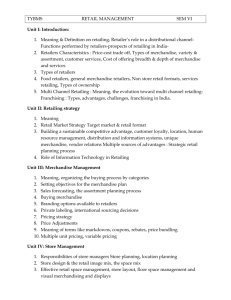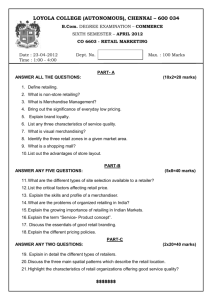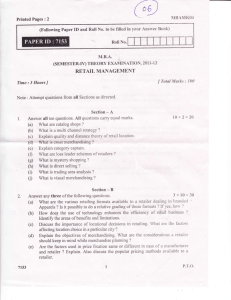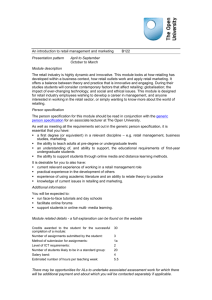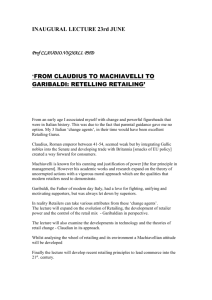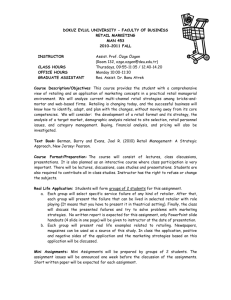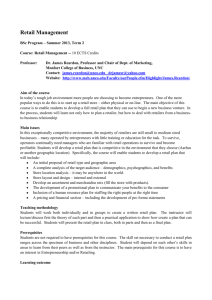MKT-160 Principles of Retailing
advertisement
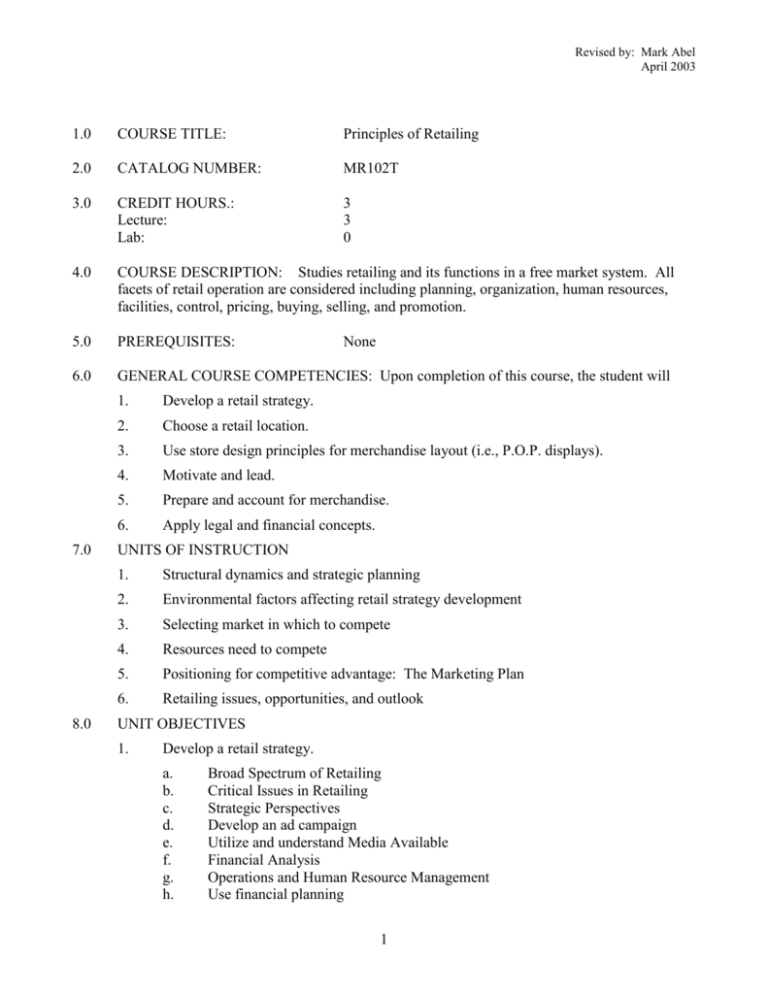
Revised by: Mark Abel April 2003 1.0 COURSE TITLE: Principles of Retailing 2.0 CATALOG NUMBER: MR102T 3.0 CREDIT HOURS.: Lecture: Lab: 3 3 0 4.0 COURSE DESCRIPTION: Studies retailing and its functions in a free market system. All facets of retail operation are considered including planning, organization, human resources, facilities, control, pricing, buying, selling, and promotion. 5.0 PREREQUISITES: 6.0 GENERAL COURSE COMPETENCIES: Upon completion of this course, the student will 7.0 8.0 None 1. Develop a retail strategy. 2. Choose a retail location. 3. Use store design principles for merchandise layout (i.e., P.O.P. displays). 4. Motivate and lead. 5. Prepare and account for merchandise. 6. Apply legal and financial concepts. UNITS OF INSTRUCTION 1. Structural dynamics and strategic planning 2. Environmental factors affecting retail strategy development 3. Selecting market in which to compete 4. Resources need to compete 5. Positioning for competitive advantage: The Marketing Plan 6. Retailing issues, opportunities, and outlook UNIT OBJECTIVES 1. Develop a retail strategy. a. b. c. d. e. f. g. h. Broad Spectrum of Retailing Critical Issues in Retailing Strategic Perspectives Develop an ad campaign Utilize and understand Media Available Financial Analysis Operations and Human Resource Management Use financial planning 1 Revised by: Mark Abel April 2003 i. j. k. l. m. n. o. p. 2. Choose a retail location 3. Use store design principles for merchandise layout (i.e., P.O.P displays). a. b. 9.0 Identify theft and inventory shortages Implement methods of inventory control and theft Calculate markup based on cost or retail Define organizational goals Globalization of Retailing Retailing and the Internet Electronic Retailing Utilization of Information, Communications and Decision Support Use effective display methods Design a functional floor plan to merchandise products 4. Motivate and lead. a. Supervise people b. Organize, direct, and plan activities c. Staff the operation d. Read, explain, and understand an organizational chart e. Solve problems 5. Prepare and account for merchandise. a. Calculate inventory turnover b. Prepare merchandise for sale c. Calculate markup on retail and cost d. Develop physical and perpetual inventory systems e. Negotiate with vendors 6. Apply legal and financial concepts. a. Comply with the local and state laws and federal regulations b. Understand customer credit c. Determine payroll deduction d. Calculate depreciation using various methods e. Calculate commissions and discounts COURSE BIBLIOGRAPHY TEXT: Retailing Management, by Levy & Weitz ; 4rd Edition 2
